 |
 |
 |
 |
|
|
|
|
|
|
|
|
|
|
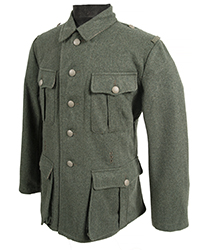
|
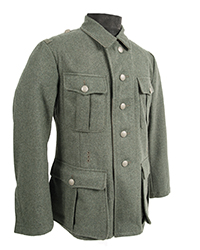
|
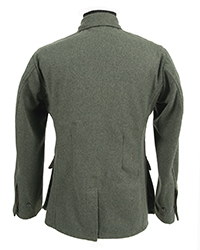
|
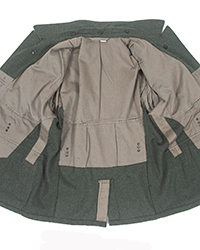
|
Tunic in photo is a size
Small Short
|
Angled chest pockets, correct
armhole sizes
|
Correct taper (10cm from
chest to waist)
|
Cotton twill lining
|
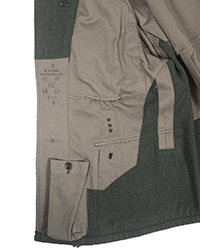
|
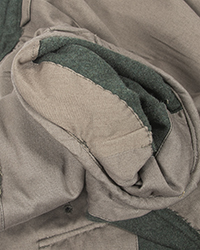
|
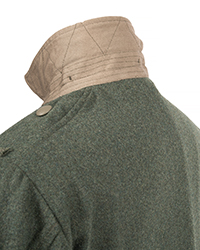
|
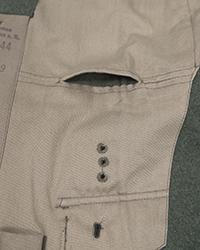
|
|
|
|
|
|
|
|
|
|
|
|
|
|
|
|
Reproduction of the "Model 40" Feldbluse worn by German troops throughout most of WWII. Commonly referred to as "tunics", these were the standard issue garment for both field and garrison duty. The details of the tunics were modified nearly every year during the Third Reich, which has led modern collectors to assign model numbers to each style that approximately correspond to the year each change was introduced. This one is the Model 1940 which was in service from 1940 until the end of the War- these were worn by both Heer (Army) and WSS troops. (The WSS had their own slightly different design, but Heer Feldblusen were sometimes worn, especially in the early phases of the conflict.)
The Feldbluse was actually designed as a field uniform, and its fit, comfort and function are quite good. Despite its fitted appearance, it is cut in such a way as to allow near total freedom of movement as required by troops in training or combat. Due to the cut of upper arm, the orientation of the armhole and a high scyedepth, the body of the garment remains relatively stationary even when the wearer climbs, crawls, exercises or salutes.
ATF Uniforms: These reproductions are exclusive to ATF. Made using our "Texled" patterns which we have developed over the past 20 years, which are entirely based on original examples, several of which were disassembled, as well as wartime specifications and grading tables. Our patterns are made from originals, so our uniforms fit like like originals. It makes a huge difference compared to those made using modified suit coat patterns.
The fabric of our reproductions is 100% wool cloth. WWII uniforms were made with a wool/ nylon 6 blend (we had it analyzed at a lab) which is no longer available. We chose the 100% wool as it has a better appearance than the 80/20 wool/ poly used by nearly everyone else. This run is done in the greener "early War" shade.
The lining correctly constructed from 100% cotton twill. Internal suspender provisions are in place, the base of the back panel, suspender channels and armpits are correctly hand stitched, and field dressing pocket is made using the proper dimensions.
Unseen under the lining but present, are multiple facings used to reinforce the belt hook holes, pocket flaps, and plackets. Most reproductions skip those. The markings are applied like the originals and display the correct measurements for each size.
Here is an article explaining How German Feldblusen were sized in WWII.
Sizing and Length: Like most jackets, Feldblusen were made according to chest size and body height. The breast size is in the center of the number block, indicated in centimeters.
For length, the Germans used the torso length (Rückenlänge), the distance from one's neck to their belt line, which is at the center belt hook hole on a Feldbluse. In typical form, the Germans made a far wider range of sizes than most armies, one to fit every possible eventuality, which results in at least 20 chest sizes and 7 lengths, or 140 unique sizes. That is not practical to recreate, so we have condensed them into the most common 10 sizes. See the size table for the breakdown.
Length: The approximate height ranges for each length are:
Short = 5'3" - 5'8" (Sleeve 23")
Regular = 5'9"- 6'0" (Sleeve 25")
Long = 6'1"- 6'6" (Sleeve 27")
Imported
Insignia sewing? We no longer offer any sort of sewing services. Check the Vendors section on the links page. About midway down there is a category for "Sewing & Tailoring" services.
|
|
 |
 |
 |
 |


|